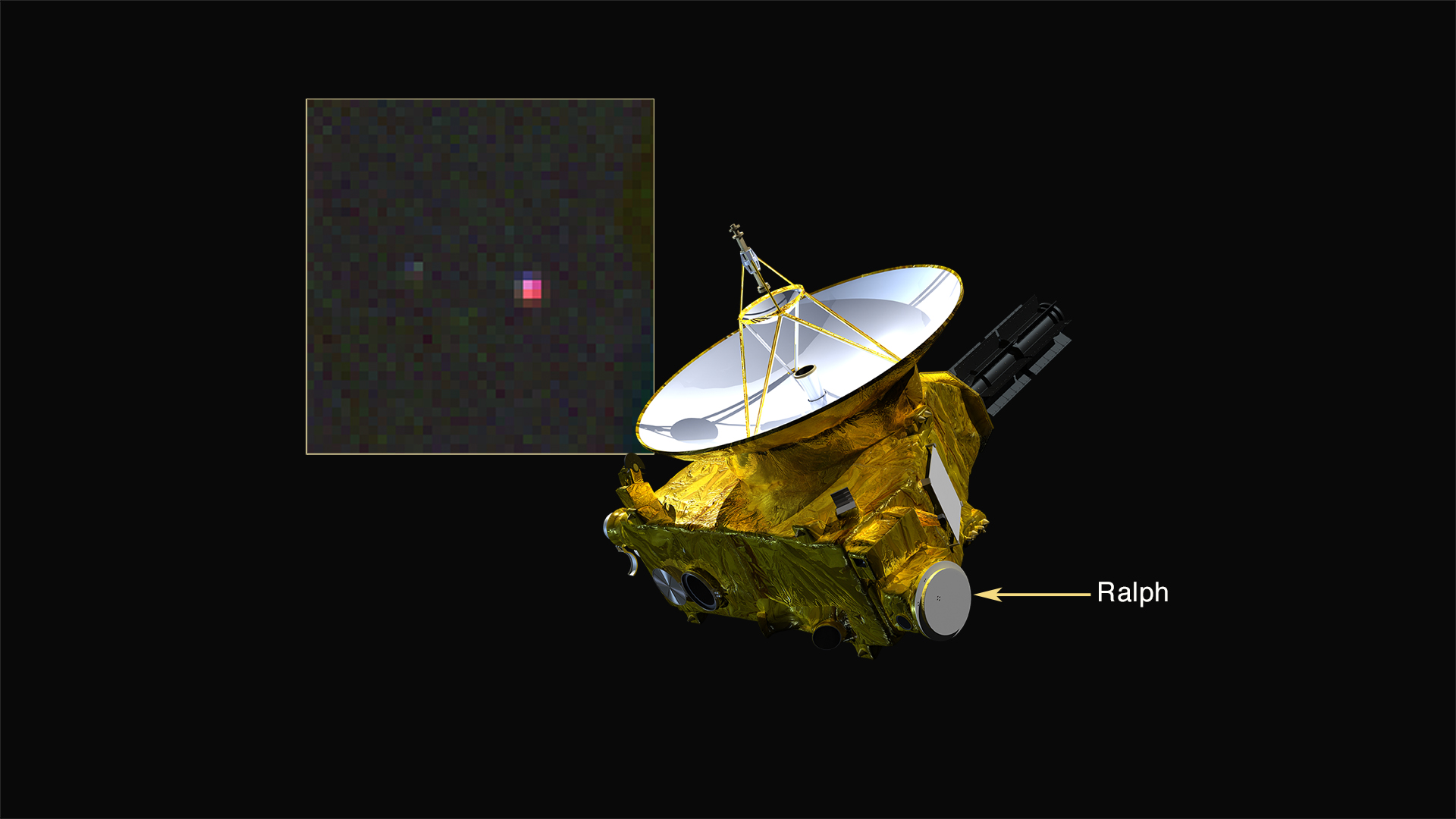Methane Detected On Pluto; Plus New Images of Pluto and Charon
The Ralph infrared spectrometer on NASA’s New Horizons spacecraft has detected frozen methane on the surface of Pluto.

Methane on Pluto was first detected by ground-based astronomers in 1976. “We already knew there was methane on Pluto, but these are our first detections,” said Will Grundy, the New Horizons Surface Composition team leader with the Lowell Observatory in Flagstaff, Arizona. “Soon we will know if there are differences in the presence of methane ice from one part of Pluto to another.”
On Earth, methane - an odorless, colorless gas - can be found underground and in the atmosphere. On Pluto, scientists believe methane may be "primordial, inherited from the solar nebula from which the solar system formed 4.5 billion years ago."
Time-lapse Movie Shows New Horizons Approach To Pluto
A time-lapse movie created from images taken with the Long Range Reconnaissance Imager (LORRI) camera on New Horizons between May 28 and June 25, 2015, shows Pluto and Charon increasing in apparent size as New Horizons gets closer. During this time, the distance between New Horizons and Pluto decreased from about 56 million kilometers to 22 million kilometres (35 million miles to 14 million miles).

In the movie “Pluto displays a strongly contrasting surface dominated by a bright northern hemisphere, with a discontinuous band of darker material running along the equator. Charon has a dark polar region, and there are indications of brightness variations at lower latitudes.”
In the annotated version below, Pluto’s prime meridian (the region of the planet that faces Charon) is shown in yellow and the equator is shown in pink.
New Horizons Course Correction
On June 30, a 23-second thruster burst corrected the trajectory of New Horizons as it homes in on Pluto, placing the spacecraft on target for its flyby of the Pluto system on July 14. The burst gave New Horizons a 27 cm/s velocity adjustment, and set its close-approach point at about 12,500 km (7750 miles) above the dwarf planet’s surface.
“This maneuver was perfectly performed by the spacecraft and its operations team,” added mission principal investigator Alan Stern, of Southwest Research Institute, Boulder, Colorado. “Now we’re set to fly right down the middle of the optimal approach corridor.”
NASA’s New Horizons spacecraft is about 16 million km (10 million miles) from the Pluto system. The spacecraft is healthy and on course. We really are on Pluto’s doorstep.
For the original press release, click here.







